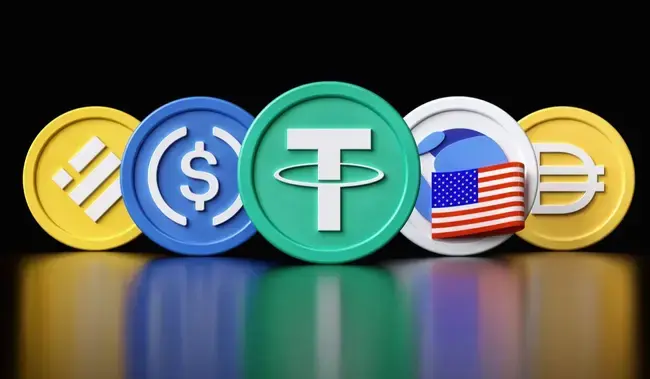Highlights:
- Ki Young Ju believes dark stablecoins may rise as strict rules increase.
- Ju believes government stablecoins will follow bank rules for taxes.
- Dark stablecoins could help with large transfers and offer investment opportunities.
In a recent tweet, Ki Young Ju, CEO of crypto analytics firm CryptoQuant, warned that censorship-resistant “dark stablecoins could come in increasing demand as government regulations on digital currencies tighten. He explained that Bitcoin was created by the cypherpunk community to be censorship-resistant, while stablecoins still require central management to connect digital and traditional finance. He pointed out that stablecoins like Tether and Circle have operated with little government interference until now. Ju said these stablecoins are a safe haven for many, like Chinese miners.
Dark stablecoins are likely to emerge in the future.#Bitcoin was created by the cypherpunk community to be censorship-resistant and belongs to no one, making it impossible to control.
Stablecoins, however, act as a bridge between the internet and the real world, so they need…
— Ki Young Ju (@ki_young_ju) May 11, 2025
Dark Stablecoins Could Become Key for Large Transfers
Ju shared that most governments haven’t deeply cracked down on stablecoins yet, aside from tackling money laundering. He thinks state-backed stablecoins will soon get rules similar to those for banks. Ju noted that transactions could trigger automatic tax collection through smart contracts, and wallets might be frozen or need extra paperwork under new rules.
Because of this, those using stablecoins for large transfers might begin turning to dark stablecoins, which are designed to avoid censorship. Ju suggests two options. First, algorithmic stablecoins that are not controlled by governments. Second, stablecoins from countries that don’t censor financial transactions.
One approach could be decentralized stablecoins that follow coins like USD Coin using Chainlink. Ju said he hasn’t found projects using this yet. Ju also added that USDT might become a dark stablecoin if it doesn’t follow future U.S. rules. He believes dark assets could offer investment chances in internet markets.
CryptoQuant stated:
“USDT itself used to be considered a censorship-resistant stablecoin. If Tether chooses not to comply with US government regulations under a future Trump administration, it could become a dark stablecoin in an increasingly censored internet economy”.
The market cap of US dollar stablecoins grew to over $230 billion in April, up 54% from last year. USDC and Tether make up 90% of the market. Stablecoin volumes reached $27.6 trillion last year, exceeding Visa and Mastercard combined by 7.7%. Some governments are tightening rules on stablecoins. Europe now has stricter rules under MiCA. In the U.S., the GENIUS Act is adding more control over USD-backed stablecoins.
The Future or Just an Idea?
Ki Young Ju said dark stablecoins are mostly just an idea. Some current stablecoins might already fit this category based on their features. DAI is a stablecoin on Ethereum, pegged to the USD and controlled by MakerDAO. It uses crypto assets like ETH and WBTC, not other stablecoins, to stay stable. No one can freeze DAI because smart contracts control it. Crypto assets are also harder to seize.
USDe is a synthetic stablecoin on Ethereum. It uses a strategy with ETH to stay stable and aims for decentralization. However, its need for centralized exchanges makes it less ideal as a dark stablecoin.
Best Crypto Exchange
- Over 90 top cryptos to trade
- Regulated by top-tier entities
- User-friendly trading app
- 30+ million users
eToro is a multi-asset investment platform. The value of your investments may go up or down. Your capital is at risk. Don’t invest unless you’re prepared to lose all the money you invest. This is a high-risk investment, and you should not expect to be protected if something goes wrong.






